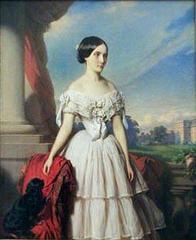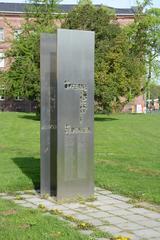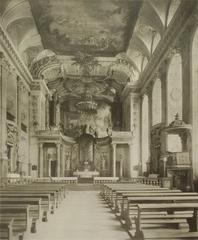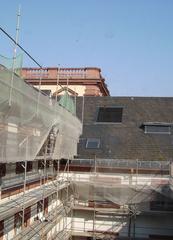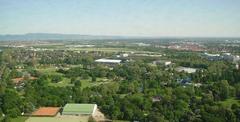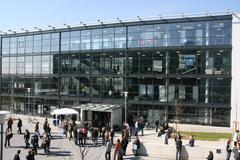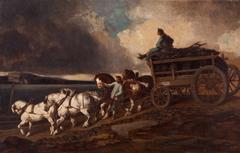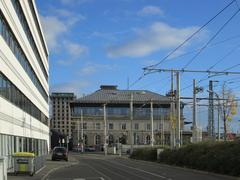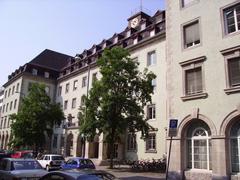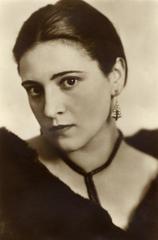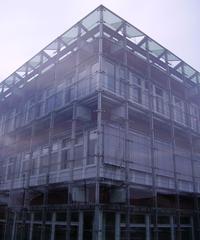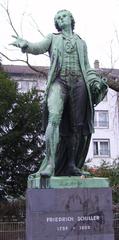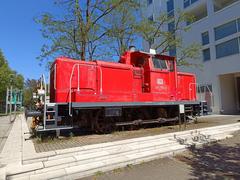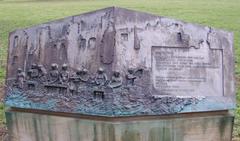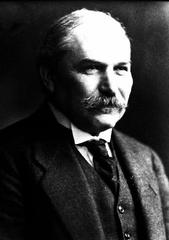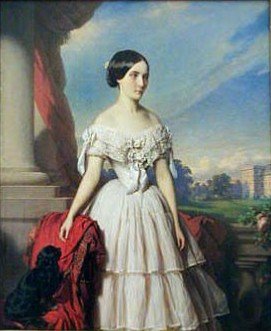
Mannheim Palace: Visiting Hours, Tickets, and Historical Sites Guide
Date: 14/06/2025
Introduction to Mannheim Palace and Its Significance
Mannheim Palace (Mannheimer Schloss) stands as one of Europe’s grandest Baroque palaces, located in the dynamic city of Mannheim, Germany. Originally commissioned in the early 18th century by Elector Karl III Philip, the palace was conceived as a powerful symbol of authority and prestige, anchoring Mannheim’s unique grid-like urban layout, famously known as the “City of Squares.” Today, it is a multifaceted landmark—serving as a museum, the main campus of the University of Mannheim, and a vibrant cultural venue.
Visitors are drawn to Mannheim Palace for its architectural splendor, rich historical narrative, and diverse programming, which includes exhibitions, concerts, and educational events. Whether you are passionate about Baroque and Rococo architecture, European history, or cultural activities, Mannheim Palace offers a captivating journey through time.
This comprehensive guide provides essential information for planning your visit—including opening hours, ticketing, guided tours, accessibility, nearby attractions, and practical tips—while also exploring the palace’s historical evolution and ongoing cultural significance. For current details on opening hours, ticket prices, and special events, consult the official Mannheim Palace website and reputable travel resources like Germany Travel.
Table of Contents
- Introduction
- History of Mannheim Palace
- Visiting Information
- Nearby Attractions
- Architectural Highlights
- Cultural and Educational Role
- Visitor Experience & Practical Tips
- FAQs
- Visuals and Media Recommendations
- Conclusion and Recommendations
- Sources
1. History of Mannheim Palace
Foundations and Early History
Mannheim Palace’s origins are intertwined with the ambitions of the Palatinate’s Electors. The city of Mannheim was founded in 1606, anchored by the fortress Friedrichsburg. Despite the devastation wrought by the Thirty Years’ War and subsequent conflicts, the site remained crucial, setting the stage for the palace’s eventual construction (marchivum.de).
The Decision to Build a Baroque Palace
In 1720, Elector Karl III Philip moved his court to Mannheim, commissioning a magnificent Baroque residence to replace the old fortress. This move, spurred by religious tensions in Heidelberg, was intended to manifest the Elector’s power and create a new cultural center in the Palatinate (spottinghistory.com).
Construction and Architectural Grandeur
Construction began on June 2, 1720, with initial costs ballooning from 300,000 to over 2 million Gulden. The palace’s main façade stretches over 400 meters, making it one of the largest Baroque structures in Europe. Its design features elaborate ornamentation, coats of arms, and grand interiors purpose-built for courtly ceremonies and social events (schloss-mannheim.de).
Zenith of Courtly Life and Cultural Flourishing
Under Elector Karl Theodor in the mid-18th century, Mannheim Palace evolved into a vibrant cultural center. The interiors were updated in the Rococo style, and the court hosted celebrated musicians, intellectuals, and artists, including the Mannheim School, which profoundly influenced classical music (spottinghistory.com).
Decline and Changing Functions
After 1778, the court relocated, and the palace’s political importance waned. The interiors were redecorated in the Empire style under Stéphanie de Beauharnais, and the 19th century brought Historicism-inspired updates (schloss-mannheim.de).
20th Century: Destruction and Restoration
World War II bombing caused extensive damage, reducing much of the palace to ruins. Post-war debates led to a major restoration campaign, meticulously reconstructing the Baroque exterior and restoring key interiors (spottinghistory.com).
Mannheim Palace Today
Today, Mannheim Palace is both a university campus and a museum, housing exhibitions that showcase its layered history through Baroque, Rococo, Empire, and Historicist rooms (schloss-mannheim.de).
2. Visiting Information
Visiting Hours
- April to October: Tuesday–Sunday, 10:00 AM – 5:00 PM
- November to March: Tuesday–Sunday, 11:00 AM – 4:00 PM
- Closed: Mondays and public holidays
Check the official site for updates and variations during special events.
Ticketing
- Adults: €8
- Reduced (students, seniors): €5
- Children under 6: Free
- Family and group discounts: Available
Purchase tickets online at the official Mannheim Palace website or on-site.
Guided Tours and Special Events
Guided tours are available in multiple languages and provide expert insight into the palace’s history, architecture, and collections. Special events—such as concerts, seasonal festivals, and temporary exhibitions—regularly enliven the palace grounds. Advance booking is recommended for tours, especially for groups.
Accessibility
Mannheim Palace is largely accessible: most public areas accommodate wheelchair users, with elevators and ramps available. Service animals are permitted, and staff can assist visitors with special requirements. Contact ahead for personalized support.
3. Nearby Attractions
Enhance your visit with these local highlights:
- Luisenpark: Mannheim’s renowned urban park, featuring botanical gardens and a scenic lake.
- Mannheim Water Tower: An iconic city landmark and a prime example of Art Nouveau architecture.
- Kunsthalle Mannheim: A leading museum of modern and contemporary art.
All are reachable on foot or via local public transit.
4. Architectural Highlights
Baroque Grandeur and Urban Planning
Mannheim Palace exemplifies the height of Baroque architectural ambition, with symmetry, grand scale, and integration into Mannheim’s “Quadratestadt” city grid (Germany Travel; Cities of Music). Its placement at the grid’s edge and direct alignment with city axes symbolize Enlightenment values of order and accessibility.
Architectural Layout and Dimensions
The palace is the second-largest Baroque complex in Europe after Versailles, stretching approximately 440 meters and comprising over 500 rooms. The main façade, crafted in red sandstone and white stucco, is distinguished by pilasters, arched windows, and an ornate portal (Germany Travel).
Stylistic Features and Decorative Arts
The palace’s exterior is monumental, with decorative balustrades, cornices, and sculpted figures. Interiors showcase the Knights’ Hall (Rittersaal), the Grand Staircase, and the Elector’s apartments, featuring stucco ceilings, gilded moldings, and frescoes (Germany Travel).
Innovations and Restoration
18th-century innovations included advanced heating, ventilation, and integrated service quarters. The post-WWII restoration combined historical accuracy with contemporary methods, resulting in a harmonious blend of original and reconstructed elements (Germany Travel).
Symbolism and Cultural Significance
The palace was designed to rival other European courts and project the Palatinate’s power. It has long been a center for music and intellectual life, a tradition continued today by the University of Mannheim (Cities of Music).
5. Cultural and Educational Role
Museum Spaces and Permanent Exhibitions
A significant section of the palace is dedicated to museum spaces, displaying over 800 artifacts—furniture, tapestries, paintings, porcelain, and silverware—immersing visitors in the life of the Prince-Electors (1xmarketing.com; Wikipedia; neuralword.com).
Temporary Exhibitions and Special Events
Rotating exhibitions address themes in regional and European history, and the annual Mannheim Castle Festival features music, theater, and historical reenactments.
Concerts, Opera, and Performing Arts
The palace’s halls are celebrated venues for concerts and operas, continuing the city’s musical legacy.
Academic and Educational Integration
The University of Mannheim occupies much of the palace, fostering research, public seminars, and academic events that leverage the palace’s historical context (Wikipedia).
Community Engagement and Accessibility
Workshops, family days, and open-air events in the Schlossgarten connect the palace with the local community, while barrier-free facilities and adapted tours ensure accessibility (thetouristchecklist.com).
Preservation and Restoration
The palace’s extensive postwar restoration, funded by public and private sources, is documented in the museum, offering insight into conservation practices (Wikipedia).
Research and Scholarly Activities
The archives and collections are valuable resources for art history, architecture, and musicology scholars.
6. Visitor Experience & Practical Tips
Opening Hours and Admission
Opening hours vary seasonally; always check the official website or call ahead. Admission tiers include standard, reduced, and family tickets, with guided tours requiring an extra fee (Schloss Mannheim Visitor Info).
Guided Tours and Self-Guided Visits
Guided tours (English/German) can be reserved in advance and are highly recommended for a deeper exploration of highlights like the Knights’ Hall and Hall of Mirrors. Audio guides and information panels support independent visits (Eupedia: Mannheim Guide).
Accessibility
Most main exhibition areas are accessible via elevators or ramps. Some historic rooms may have limited access. Strollers are permitted except in select exhibition rooms.
Best Time to Visit
Late spring (May–June) and early autumn (September) offer pleasant weather and fewer crowds (Eupedia: Best Time to Visit; Easeweather Mannheim). Early mornings or late afternoons are ideal for quieter visits and better photography lighting.
What to See and Do
- Knights’ Hall: Lavish stucco and frescoes
- Hall of Mirrors: Inspired by Versailles
- State Apartments: 18th-century furnishings
- Palace Chapel: Ornate Baroque decor
- Museum Exhibits: Over 800 historical artifacts
- Palace Gardens: Statues, fountains, and floral displays (Triplyzer: Mannheim Palace Gardens)
Special Events
Highlights include the annual Mannheim Castle Illuminations and rotating cultural exhibitions (Triplyzer: Mannheim Castle Illuminations).
Visitor Services and Amenities
Restrooms, cloakroom, gift shop, and a café are available on-site. Photography is allowed in most areas for personal use; check for restrictions.
Getting There
Centrally located on Bismarckstraße, near Mannheim Hauptbahnhof. Easily accessible by train, tram, bus, or car, with public parking nearby (Germany Destinations: Getting There).
Nearby Attractions
- Jesuit Church: Baroque masterpiece
- Wasserturm (Water Tower): City symbol
- Luisenpark: Urban park for relaxation
Insider Tips
- Book tours early, especially during peak seasons (Schloss Mannheim Guided Tours).
- Some palace areas may close for events or university use—check ahead.
- Comfortable footwear is recommended.
- Early or late in the day is best for exterior photos.
- Consider a private guided walking tour (Travel Buddies: Mannheim Tour).
Safety, Family-Friendliness, and Sustainability
- Security checks may occur at entry.
- Lost and found at the ticket desk.
- Emergency exits are clearly marked.
- Maintain quiet in chapels and museum rooms.
- Keep the palace and gardens clean.
7. Frequently Asked Questions (FAQs)
Q: What are Mannheim Palace’s opening hours?
A: Tuesday–Sunday, 10:00 AM–5:00 PM (seasonal variations apply; check official website).
Q: How much do tickets cost?
A: Adults €8, reduced €5, children under 6 free, with family/group discounts.
Q: Are guided tours available?
A: Yes, in English and German; book in advance.
Q: Is the palace accessible for wheelchair users?
A: Most main areas are accessible; contact ahead for specific needs.
Q: What are the best times to visit?
A: Late spring and early autumn; early morning or late afternoon for fewer crowds.
Q: Are photography and videography allowed?
A: Yes, in most areas without flash; check event-specific policies.
8. Visuals and Media Recommendations
Enhance your visit with virtual tours and high-quality images on the official Mannheim Palace website. Look for photos with descriptive alt tags such as “Mannheim Palace visiting hours main entrance” and “Baroque halls at Mannheim Palace.” An interactive map and virtual tours are recommended for pre-visit planning.
9. Conclusion and Recommendations
Mannheim Palace is a testament to Baroque brilliance and the rich heritage of the Palatinate region. Its impressive façade, opulent interiors, and ongoing role as a cultural and educational hub make it a must-visit destination. To maximize your experience, plan your visit during the milder seasons, secure guided tour bookings early, and explore both the palace and surrounding attractions. For up-to-date information, ticketing, and guided audio tours, consult the official Mannheim Palace website and consider downloading the Audiala app.
Explore the grandeur and living history of Mannheim Palace, and immerse yourself in one of Europe’s most remarkable Baroque landmarks.
10. Sources
- Mannheim Palace Official Website
- Mannheim Cultural Highlights – Germany Travel
- Mannheim Palace – Wikipedia
- Schloss Mannheim Visitor Information
- Mannheim Palace History – Spotting History
- Eupedia: Mannheim Guide
- Triplyzer: Mannheim Palace Tips
- Travel Buddies: Mannheim Tour
- The Tourist Checklist: Mannheim
- 1xmarketing.com
- Neuralword: Mannheim Baroque Palace
- Germany Destinations: Mannheim
- Easeweather Mannheim
- Cities of Music: Mannheim
